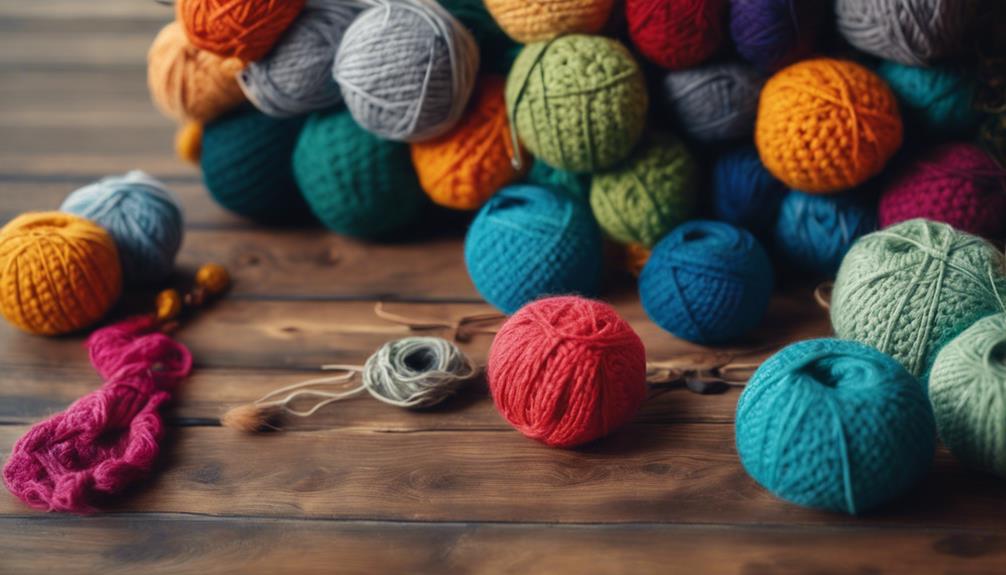Sustainable fashion is not simply a passing trend; it is a necessary response to a harmful industry. Despite claims of improvement, the majority of clothing produced today still originates from non-biodegradable materials. An alarming 87% of apparel finds its way to landfills or incinerators annually. Even though innovations often fall short of making a significant ecological difference, and current business models fail to address waste and exploitation at their core. Consumer demand for eco-friendly alternatives is on the rise, but true change requires more than just awareness. If you are interested in exploring the future and potential impact of sustainable fashion, there is much more to discover.
Key Takeaways
- Despite claims, the fashion industry has seen little substantial change in sustainability over the past 25 years, with most products still non-biodegradable.
- Sustainable business models struggle to address the root causes of environmental degradation, leading to continued overproduction and waste.
- Eco-friendly innovations often mislead consumers, obscuring the reality of unsustainable materials and practices used in fashion.
- Regulatory intervention is crucial to hold companies accountable for their environmental impact and enforce sustainable practices in the industry.
Industry Claims Vs. Reality
Despite the fashion industry's bold claims about sustainability, the reality is that its environmental impact has hardly changed over the past 25 years. You might think that with all the buzz about sustainable fashion, things would be getting better. However, most products are still made from non-biodegradable, petroleum-based materials. High-profile innovations, like bio-based materials and recycling initiatives, have failed to make a dent in the industry's overall ecological footprint.
You may have heard the misconception that sustainability exists on a spectrum, but the truth is that 'less unsustainable' doesn't equal real sustainability. Most fashion items still end up in landfills, contributing to a growing waste problem. It's clear that market-based solutions haven't effectively tackled the challenges posed by the fashion industry, leading to calls for regulatory intervention.
The industry's image of progressiveness is misleading, as it doesn't accurately reflect its environmental responsibility. Instead of isolated innovations, what's needed is a systemic change that addresses the core issues. As a consumer, you deserve transparency and accountability in the fashion industry, and it's time to demand a genuine commitment to sustainable practices.
Innovations and Their Failures

You've probably seen countless claims about innovative materials and eco-friendly practices in fashion, but the reality often falls short.
Many of these so-called sustainable solutions don't deliver on their promises, leaving you questioning their true impact.
As you explore the landscape of fashion innovations, it's essential to scrutinize what's genuinely effective versus what's just marketing hype.
Unfulfilled Promises of Sustainability
Many fashion brands tout innovative sustainability solutions, yet these promises often fall short, failing to make a real impact on the industry's environmental footprint. You might be surprised to learn that despite high-profile initiatives, the fashion industry's environmental effects have remained largely unchanged over the past 25 years.
Here are some key points to examine:
- Recycling, resale, and rental models are often more about marketing than meaningful change.
- Approximately 60% of clothing items end up in landfills within a year of purchase.
- Less than 1% of clothing materials are effectively recycled.
- The fashion sector incurs an estimated $100 billion annual cost due to waste.
These statistics reveal that many so-called sustainable practices are insufficient and often fail to address the root causes of environmental degradation.
As a consumer, you need to critically evaluate these innovations and demand genuine accountability from brands in the fashion industry. Only then can we begin to forge a path toward true sustainability.
Misleading Eco-Friendly Innovations
Misleading eco-friendly innovations often lure consumers with promises of sustainability while failing to deliver real change in the fashion industry's environmental impact. You might think that opting for bio-based materials or recycling initiatives would help the planet, but over 60% of clothing items still end up in landfills or incinerators within a year.
Terms like 'carbon positive' or 'vegan' can mislead you into believing these products are genuinely sustainable, even when many are still made from non-biodegradable, petroleum-based materials.
While the resale market shows changing attitudes, it doesn't address the root causes of environmental degradation. You may pay a premium for items labeled as eco-friendly, but less than 1% of clothing materials are actually recycled, costing the industry around $100 billion annually.
Even high-profile concepts like Rent-the-Runway have fallen short, revealing that sustainability requires more than just surface-level innovations.
In the end, without a fundamental shift in production and consumption practices, these misleading eco-friendly innovations fail to create meaningful impact, leaving you questioning whether true sustainability is ever achievable in fashion.
Regulatory Intervention Necessity

You can't ignore the urgent need for regulatory intervention in the fashion industry.
Without it, companies won't be held accountable for the environmental costs they impose, and market solutions just aren't cutting it.
It's time to enforce sustainable practices that genuinely shift the industry toward a more responsible future.
Accountability for Environmental Costs
The fashion industry's persistent environmental harm demands urgent regulatory intervention to hold companies accountable for their unsustainable practices.
Despite claims of sustainability, the sector's environmental impact hasn't changed notably in decades. You might wonder how we can push for real change.
Here are some critical points to ponder:
- Waste Generation: 87% of garments end up in landfills or incinerators each year.
- Market Failures: Current market-based solutions fall short in effectively addressing sustainability issues.
- Inadequate Recycling: Only 1% of discarded clothing is recycled, showcasing the inefficacy of voluntary initiatives.
- Lack of Regulation: The unregulated nature of the fashion industry fosters exploitation of workers and contributes to environmental degradation.
Without robust regulations, the push for sustainable products will remain superficial.
It's time for governments to step in and mandate accountability within the fashion industry. You have the power to advocate for these changes, holding brands responsible for their environmental impact.
Enforcing Sustainable Practices
Regulatory intervention is vital to enforce sustainable practices in the fashion industry, ensuring companies take responsibility for their environmental impacts rather than relying on ineffective market solutions. The current lack of regulation has allowed the fashion industry to contribute considerably to environmental degradation, with a staggering 87% of garments produced ending up in landfills or incinerators.
To combat this, you need to understand that regulatory frameworks are necessary to hold companies accountable for their actions. Without these frameworks, brands might continue to treat sustainability as a mere marketing gimmick. Effective regulations can mandate sustainable sourcing and production methods, ensuring that only sustainable products hit the market.
You'll find that government intervention is essential for making brands bear the costs associated with their negative environmental effects. Such measures will help transform superficial sustainability efforts into genuine commitments backed by enforceable standards. Currently, only 1% of discarded clothing is recycled, highlighting the urgent need for systemic change.
Market Solutions Limitations
Market-based solutions like recycling and rental models have proven inadequate in driving genuine sustainability in the fashion industry. Despite your best efforts to engage with these options, the grim reality is that the overwhelming production of fast fashion continues to wreak havoc on the environment.
Here's why regulatory intervention is necessary:
- Minimal Recycling Rates: Less than 1% of discarded clothing gets recycled.
- Overproduction Crisis: The fashion industry churns out around 150 billion garments annually.
- Landfill Impact: An astonishing 87% of those garments end up in landfills or incinerators.
- Worker Exploitation: Lack of regulation has led to widespread exploitation of factory workers.
These facts underline that market solutions alone can't tackle the sustainability crisis. You need to push for government policies that hold companies accountable for their environmental impacts.
Only through regulatory frameworks can we guarantee that sustainable practices become the norm rather than a trend. Without this systemic change, the fight against fast fashion remains an uphill battle.
Business Models and Limitations

Sustainable fashion business models often promise eco-friendly solutions, yet many struggle to make a meaningful impact on reducing the industry's environmental footprint.
While recycling, resale, and rental options are marketed as sustainable alternatives, their effectiveness is limited. For instance, although resale markets are expected to outpace fast fashion by 2028, current consumer behaviors and industry practices need better alignment to maximize sustainability efforts.
Models like Rent-the-Runway haven't delivered significant results, demonstrating that merely being 'less unsustainable' isn't enough. You might find that consumer willingness to pay a premium for sustainable products is another barrier, with 26% of business owners highlighting low consumer demand as a challenge.
Moreover, existing business models often miss the mark by failing to address the root causes of environmental degradation in the fashion industry. Instead of isolated innovations, the sector requires a systemic change for genuine progress.
Future of Sustainable Fashion

As consumers increasingly demand eco-friendly options, the future of fashion is poised for a transformation that prioritizes sustainability at its core. The shift towards sustainable fashion isn't just a fleeting trend but a necessary evolution in response to climate change and environmental degradation.
Here's what you can expect moving forward:
- Resale Market Growth: The resale fashion market is set to outpace fast fashion by 2028, highlighting a preference for second-hand items.
- Innovations in Sustainable Materials: Brands will invest in and innovate sustainable materials, making eco-friendly options more accessible.
- Millennial Influence: With over 71% of millennials prioritizing sustainability, their purchasing power will drive brands to adopt greener practices.
- Circular Economy Principles: Expect a rising demand for circular economy models, emphasizing recycling and longevity in fashion.
Consumer Behavior and Trends

Consumer preferences are rapidly shifting towards eco-friendly options, driven by a growing awareness of environmental issues and the influence of younger generations. You might've noticed that Gen Z holds over 40% of purchasing power and prioritizes sustainability when making purchasing decisions. This shift in consumer behavior is evident as more individuals, especially millennials, actively seek out brands that align with their values.
Interestingly, while many are willing to invest in sustainable fashion, price often takes precedence over ethical considerations. This creates a complex landscape where consumers grapple with balancing cost and sustainability. However, a significant 92% of Indian adults show a readiness to pay more for sustainable products, indicating a broader global trend valuing eco-friendly choices.
Additionally, the surge in openness to second-hand purchases among younger demographics reflects a desire for sustainable alternatives. As consumer awareness grows, the fashion industry is responding. With 71% of millennials prioritizing sustainability in their shopping choices, it's clear that this trend isn't just a fad; it's a transformative movement reshaping consumer behavior and the market landscape.
Frequently Asked Questions
Is Sustainable Fashion Just a Trend?
You might wonder if sustainable fashion's just a trend. While many consumers prioritize eco-friendly choices, the industry's practices still lag behind. It's essential to remain vigilant and supportive of genuine sustainability efforts to foster lasting change.
Do People Really Care About Sustainable Fashion?
You're standing at a crossroads, with a growing number of consumers choosing sustainability over convenience. Many genuinely care about sustainable fashion, but the tug-of-war between price and ethics still clouds their decisions.
What Is the Problem With Sustainable Fashion?
The problem with sustainable fashion lies in overconsumption and ineffective recycling. Most clothes end up in landfills, and limited fabric options make it hard for brands to truly commit. You can help by choosing wisely.
Is Sustainability Becoming a Trend?
You've probably noticed sustainability gaining traction lately. It's not just a trend; it's a movement. As you explore eco-friendly options, you'll find more brands committing to sustainable practices, reflecting your growing preference for responsible choices.
Conclusion
In the whirlwind of sustainable fashion, it's clear that while it might seem like a fleeting trend, the reality is far more complex. As consumers become more aware of the environmental and social impact of fast fashion, the demand for sustainable alternatives continues to grow. This shift in consumer behavior has also put pressure on fashion brands to prioritize sustainability in their production processes. The sustainable fashion impact can be seen in the increasing availability of eco-friendly materials, ethical manufacturing practices, and transparency in supply chains.
Innovations promise change, yet many fall short. Without regulatory pressure, true progress is a dream.
As consumer awareness skyrockets, brands must adapt or risk extinction.
So, as you navigate your wardrobe choices, remember: your decisions can spark a fashion revolution that's more powerful than a thousand runway shows!









